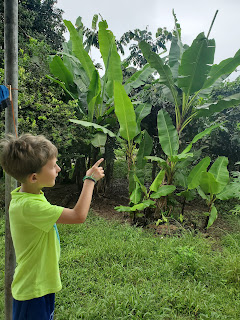Amistad (Friendship)

“We cannot tell the precise moment when friendship is formed. As in filling a vessel drop by drop, there is, at last, a drop which makes it run over; so, in a series of kindnesses there is at last one which makes the heart run over.” Ray Bradbury, Fahrenheit 451 There is nothing like being far from home for an extended time to fill our hearts with longing for those we love. So too, there is nothing like the laying down of fresh roots to open our hearts to new connections. We have been blessed these past few months with visits from many friends from back "home", and we have had countless moments of shared experiences with our new friends here in La Josefina. Below are some images from just some of those moments. Evan and Dillon, boogie boarding in Olón in the surprisingly warm waters of the equatorial Pacific Ocean. One of our favorite hikes, El Guadual Waterfall, with Erica Leyver, Brynna, Dillon, Joan, and Jonah eating claudias (Ecuadorian plums) Post-river sw...


